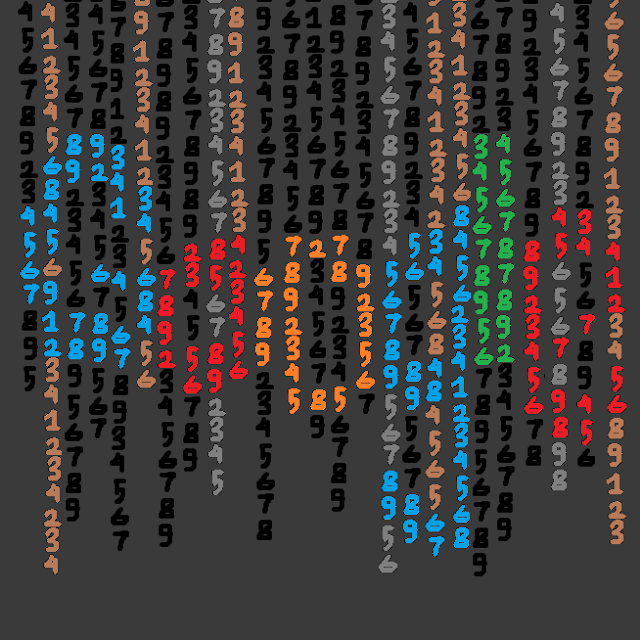The Evolution of Digital Audio Workstations (DAW) - Transforming Sound Creation - Blog No. 32
In a world where music, podcasts, and sound design are an integral part of our lives, the role of Digital Audio Workstations (DAWs) cannot be overstated. Whether you're a bedroom producer crafting beats for SoundCloud, a professional mixing engineer working with Grammy-winning artists, or a filmmaker enhancing a scene with immersive sound effects, DAWs have revolutionized the way we create, record, and manipulate audio. But what exactly is a Digital Audio Workstation, and how did it become the powerhouse of modern music production? Let’s dive into the fascinating world of DAWs and explore their journey, impact, and future.
Related
The Art of Music Transcribing - Unlocking the Secrets of Sound - Blog No. 31
The Art of Music Mixing - Crafting Sonic Perfection - Blog No. 33
What is a Digital Audio Workstation?
A Digital Audio Workstation (DAW) is a software application used for recording, editing, mixing, and producing audio. Unlike the bulky and expensive analog recording studios of the past, DAWs offer musicians and producers a streamlined, cost-effective, and highly flexible approach to music creation. From simple track recordings to intricate compositions with multiple layers of instruments and effects, DAWs provide an all-in-one solution to audio production.
A Brief History of DAWs
The Analog Days
Before DAWs became a staple in the music industry, recording was a complex and expensive process. Engineers relied on large mixing consoles, reel-to-reel tape machines, and racks of outboard gear to capture and process sound. The process was time-consuming, required meticulous attention to detail, and often left little room for error or creative experimentation.
The Birth of Digital Recording
The 1970s and 80s saw a shift toward digital technology. Companies like Sony and Mitsubishi developed early digital recording systems, but it wasn’t until the late 1980s that personal computers became powerful enough to handle digital audio processing. Steinberg’s Cubase (1989) and Digidesign’s Pro Tools (1991) were among the pioneers of software-based recording, paving the way for modern DAWs.
The Rise of Software-Based Studios
By the early 2000s, computers had become significantly more powerful, and software DAWs became a viable alternative to traditional studio setups. Programs like Ableton Live, FL Studio, and Logic Pro introduced new workflows, real-time manipulation, and MIDI sequencing that changed the game for musicians and producers. The affordability and accessibility of these tools meant that anyone with a computer could produce high-quality music from the comfort of their home.
Top Digital Audio Workstations in 2025
The DAW market is highly competitive, with each software offering unique features tailored to different types of producers. Here are some of the top DAWs currently shaping the industry:
1. Ableton Live – Best for Electronic Music & Live Performance
Ableton Live is widely used in electronic music production and live performances. Its intuitive session view allows for real-time experimentation, making it a favorite among DJs and electronic artists.
2. Pro Tools – The Industry Standard for Professional Studios
Pro Tools is the go-to software for professional recording studios, offering unmatched audio quality, advanced editing tools, and seamless hardware integration.
3. FL Studio – A Favorite Among Beatmakers
FL Studio’s user-friendly interface and powerful step sequencer make it the preferred choice for hip-hop and EDM producers worldwide.
4. Logic Pro – The Apple User’s Dream
Exclusively available for macOS, Logic Pro provides a vast library of virtual instruments and loops, perfect for singer-songwriters and composers.
5. Cubase – The Composer’s Choice
Cubase is popular among film composers and orchestral producers, offering powerful MIDI editing tools and deep integration with virtual instruments.
How DAWs Revolutionized Music Production
1. Home Studios and Independent Artists
Before DAWs, high-quality music production required expensive studio time. Today, anyone with a laptop and headphones can create radio-ready tracks from home, democratizing the industry and giving rise to independent artists who control their own creative output.
2. Unlimited Creative Potential
With virtual instruments, effects, and automation, DAWs offer limitless possibilities for sound manipulation. Producers can layer hundreds of tracks, tweak every detail, and experiment with effects that were once exclusive to high-end studios.
3. Seamless Collaboration
Cloud-based DAW integration allows musicians and producers to collaborate across the globe. Whether it's through file-sharing platforms or cloud-based DAWs like BandLab, distance is no longer a barrier to making great music.
4. Enhanced Workflow Efficiency
DAWs streamline the entire music production process, from recording to mixing and mastering. Features like MIDI controllers, drag-and-drop interfaces, and AI-powered mastering tools make the workflow faster and more efficient than ever.
Choosing the Right DAW for Your Needs
Selecting the right DAW depends on various factors, including your genre, workflow preferences, and budget. Here are some key considerations:
For Beginners: FL Studio and GarageBand offer intuitive interfaces and plenty of built-in resources to get started.
For Electronic Music: Ableton Live and Bitwig Studio are great for real-time performance and sound design.
For Recording Bands: Pro Tools and Studio One provide top-notch recording and mixing capabilities.
For Film Scoring: Cubase and Logic Pro are equipped with powerful MIDI and orchestration tools.
The Future of DAWs: AI and Beyond
With advancements in AI, machine learning, and cloud-based collaboration, the future of DAWs is incredibly exciting. AI-powered assistants can already suggest chord progressions, mix tracks automatically, and even generate beats based on a producer’s style. As computing power continues to grow, we can expect DAWs to become even more intuitive, accessible, and powerful.
Conclusion
The rise of Digital Audio Workstations has transformed the way we create and consume music. Whether you're a seasoned producer or just starting your musical journey, DAWs provide an unprecedented level of creative control, flexibility, and accessibility. As technology continues to evolve, so too will the possibilities for music production, making it an exciting time for artists, engineers, and music enthusiasts alike. What’s your go-to DAW? Let us know in the comments!



Comments
Post a Comment